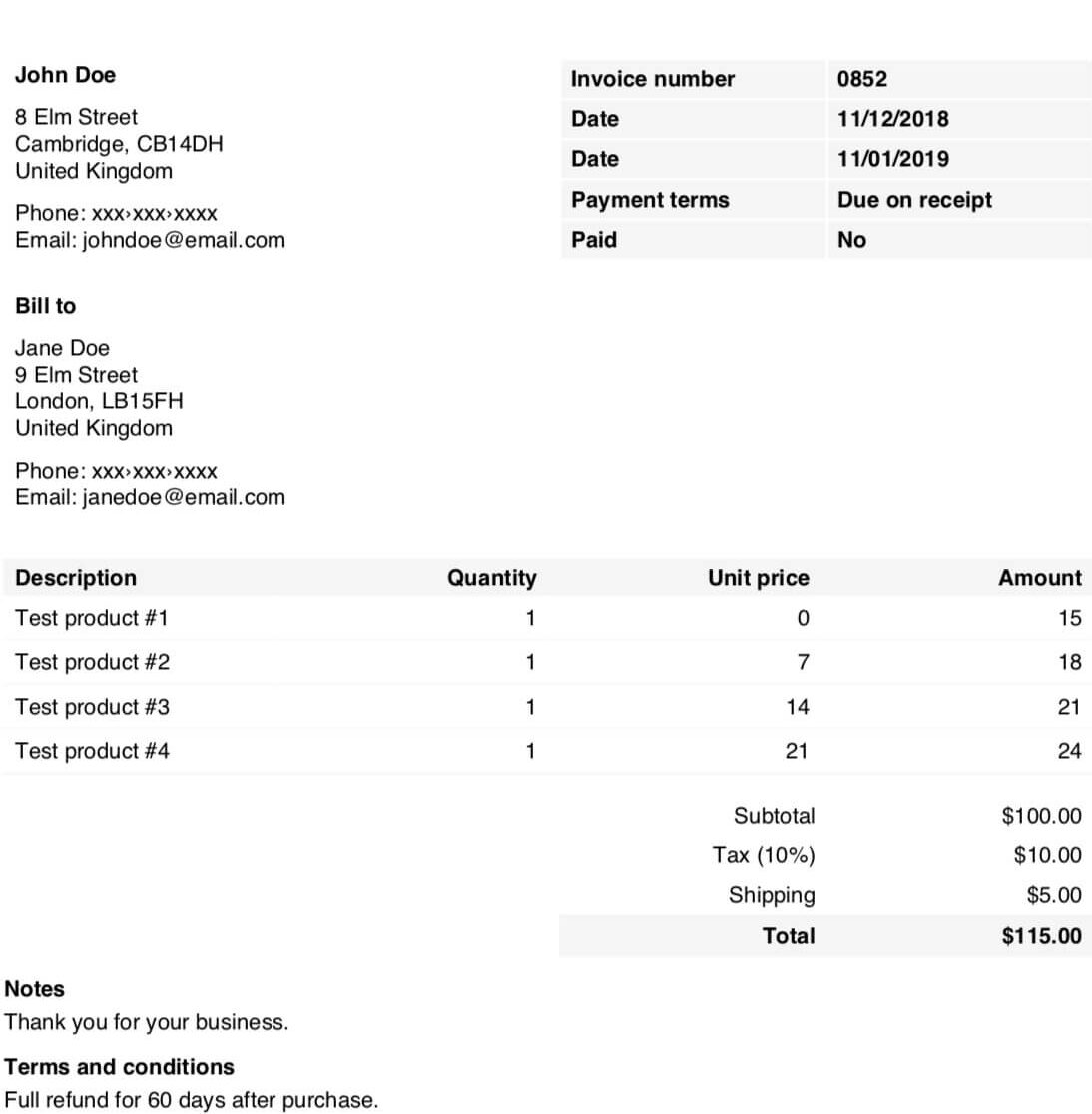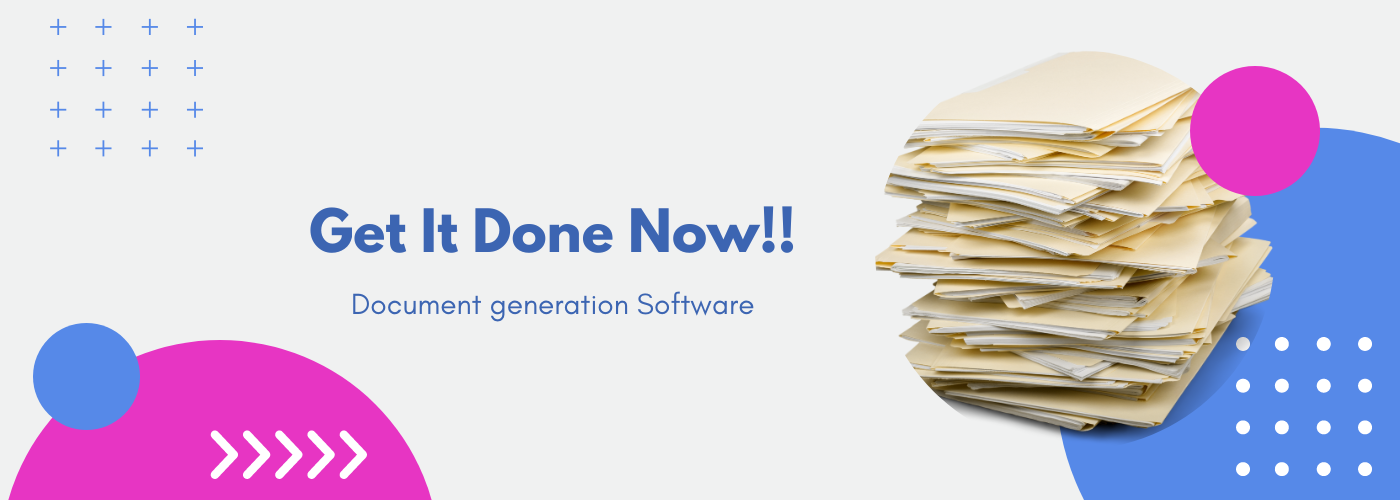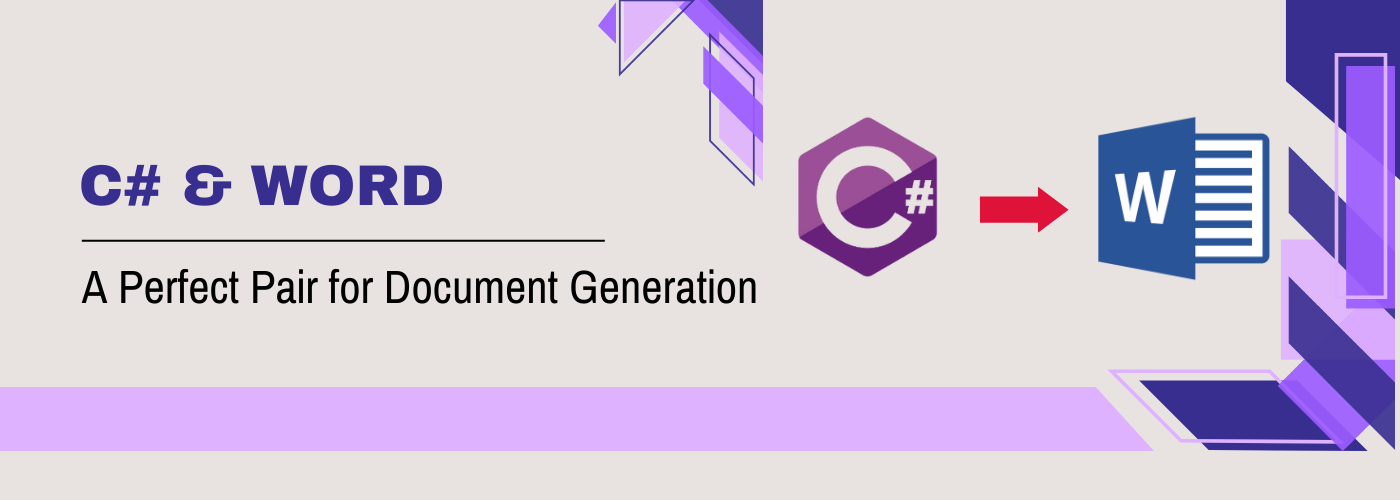Document Generation Challenges
Introduction
In today’s digital age, there is no shortage of tools available for document generation. Established software like MS Word, WPS Office, and Google Docs have long been trusted options for creating documents. So, you might wonder why people still explore alternative techniques like coding or specialized document generation tools.
And with some business solutions already offering inbuilt document generation functions, what drives the need for separate tools?
In this blog, we will delve into these questions and uncover the reasons why individuals and businesses are seeking different approaches to document generation. We will explore the limitations of traditional tools and the challenges they pose in meeting diverse requirements. Additionally, we will examine the benefits and unique capabilities that alternative techniques, such as coding or dedicated document generation tools, bring to the table.
Join us on this exploration of the shifting document generation landscape and uncover the compelling reasons why people are turning to alternative techniques and specialized tools.
Initial Methods Used for Document Generation
In the early days of document generation, people relied on traditional methods to create and manage their documents. Two popular tools that emerged during this time were MS Word and WPS Office, which provided essential functionalities for typing and formatting text. These software applications revolutionized the way documents were created, offering user-friendly interfaces and a wide range of formatting options.
But, creating multiple documents at a time was difficult with these methods. So, the next method introduced was Mailmerge.
Mailmerge
Mail merge provided a solution by allowing users to merge a document template with a data source, such as a spreadsheet or a database. This enabled the automatic population of fields with specific information, resulting in personalized documents at scale. This technique proved to be a time-saving solution for generating personalized letters, labels, and other repetitive documents. Watch the below video to know, how the documents are created from mailmerge:
document generation Challenges Faced using Mailmerge
Although mail merge offered a convenient way to generate personalized documents at scale, it also came with its own set of challenges. Users faced several limitations and difficulties when using mail merge, leading to potential frustrations and inefficiencies.
One challenge was the initial setup process. Configuring the mail merge required careful formatting of the document template and ensuring proper alignment with the data source.
Any mistakes or inconsistencies in the setup could lead to errors in the merged documents. Users had to invest time and effort in understanding the intricacies of the mail merge feature and ensuring its proper implementation.
Another challenge arose when dealing with large volumes of documents. As the number of documents to be generated increased, the performance of mail merge could be affected. Processing a large amount of data and merging it with the document template could slow down the overall process, leading to delays and decreased productivity.
Furthermore, mail merge had limitations in terms of dynamic content generation and advanced customization. While it was effective for basic personalization, achieving more complex requirements, such as conditional formatting or dynamic content based on specific criteria, proved challenging. Users often had to resort to workarounds or manual editing to accomplish these tasks, which defeated the purpose of automation and efficiency.
The reliance on external data sources also posed challenges. Ensuring the accuracy and consistency of the data in the source files was crucial for generating accurate and reliable merged documents. Any inconsistencies or errors in the data could result in incorrect or misleading information in the final documents.
Using Programmatic language
Faced with the limitations of traditional document generation tools, many individuals and businesses turned to code languages like Python and C++ as alternative solutions. These programming languages offered greater flexibility and control over the document generation process.
By leveraging Python or C++, users could write custom scripts or programs to automate the creation of documents. They could dynamically generate content, apply advanced formatting, and handle complex data manipulation tasks.
The process involved writing code that specified the desired structure, content, and formatting of the documents. Users could incorporate variables, loops, and conditional statements to create dynamic and personalized documents. By harnessing the power of these coding languages, they could generate documents in bulk with greater efficiency and accuracy.
Python, with its simplicity and extensive libraries, became a popular choice for document generation tasks. It offered libraries such as PyPDF2 and ReportLab that provided functionalities for creating and manipulating PDF documents. C++ provided lower-level control and performance optimizations, making it suitable for complex document generation requirements. If you want to learn how to generate documents using Python. Click here, Or watch this video for clear understanding.
document generation Challenges Faced using Python or C++
Technical expertise requirement: Generating documents through coding languages required a certain level of programming knowledge and expertise. Users needed to be familiar with the syntax and concepts of the programming language, which could be a barrier for individuals without a technical background.
Maintenance and modifications: As requirements changed or new features were needed, modifying or maintaining the code became necessary. This process often requires continuous technical support or programming skills, which might not be readily available or practical for all users.
Time and effort: Developing and debugging code for document generation could be time-consuming, especially for complex requirements. Writing and fine-tuning the code to handle various document elements and formatting aspects could require significant effort.
Lack of user-friendliness: Coding-based solutions were primarily designed for programmers, so they might not be user-friendly for non-technical users. Navigating through the code and making adjustments or customizations might not be intuitive or straightforward.
Limited flexibility for non-technical users: Non-technical users may have difficulty making changes or customizing the document generation process without relying on programmers. This limitation could restrict the agility and independence of non-technical individuals or teams in creating and modifying documents.
Business solution with document generation functionality:
As businesses sought more efficient and integrated solutions for document generation, they turned to certain business software that offered inbuilt document generation functionality. These software solutions provided a comprehensive suite of tools and features that catered to various business needs, including document creation.
By utilizing these business solutions, users could generate documents within the same platform they used for other business operations. This integration streamlined workflows and eliminated the need to switch between multiple tools or applications. Some of the business solutions that include document generation capabilities are Temenos, Finastra Fusion LaserPro, Nymbus, etc. For example, Invoice created by a normal business solution looks like this:
The inbuilt document generation functionality in these solutions offered several advantages.
Users could leverage pre-designed templates or customize their own, ensuring consistency in branding and formatting across all generated documents. They could also integrate data from various sources, such as customer databases or enterprise systems, to automatically populate relevant information into the documents.
One of the key benefits of utilizing a business solution for document generation was the seamless integration with other business processes. Users could generate documents directly from customer relationship management (CRM) systems, enterprise resource planning (ERP) systems, or project management tools, ensuring data accuracy and real-time updates.
Moreover, these solutions often provided collaboration features, allowing teams to work together on document creation, review, and approval. Version control, comments, and access permissions ensured efficient collaboration while maintaining data security.
By leveraging the inbuilt document generation functionality of business solutions, businesses could achieve increased productivity, reduced manual effort, and improved consistency in their document workflows.
They no longer had to rely on separate tools or coding-based approaches, as these solutions provided a user-friendly interface and streamlined document generation process within a unified platform.
Limitations
While utilizing business solutions with inbuilt document generation functionality offered several advantages, there were also limitations that users encountered. These limitations include:
Limited customization options: The document generation features within business solutions often provided predefined templates or limited customization capabilities. Users may face restrictions in terms of design flexibility or specific formatting requirements, which could be a drawback for businesses with unique branding or layout preferences.
Dependency on the software provider: Users relied on the software provider for updates, improvements, and bug fixes related to document generation functionality. If the provider did not prioritize or address specific user requirements promptly, it could hinder the efficiency or suitability of the document generation process.
Integration challenges: While business solutions aimed to integrate various operations within a single platform, compatibility issues could arise when integrating with other systems or software. Users might face challenges in synchronizing data or connecting the document generation functionality with external databases or applications.
Limited advanced features: Inbuilt document generation functionality in business solutions often focused on basic document creation needs. Users requiring more advanced features such as complex data merging, conditional formatting, or document automation may find these solutions lacking in such capabilities.
Vendor lock-in: Users who heavily rely on the document generation functionality within a specific business solution may face vendor lock-in. Switching to another software provider or migrating to a different system could involve significant effort, data migration challenges, and potential disruption to ongoing business operations
Dedicated document generation software
Dedicated document generation software has emerged as a powerful solution to address the limitations and challenges faced by traditional methods, coding-based approaches, and inbuilt functionalities of business solutions.
This software offers a comprehensive set of features specifically designed to streamline and enhance the document generation process.
Document generation software provides a user-friendly interface that simplifies the creation of various types of documents, such as contracts, reports, invoices, and proposals.
It eliminates the need for complex coding or extensive technical expertise, making it accessible to a wider range of users, including non-technical individuals.
One of the key functionalities of document generation software is template management. Users can design and customize templates according to their branding guidelines, ensuring consistency across all generated documents.
These templates serve as a foundation, allowing users to easily populate dynamic content and merge data from different sources into the documents.
Integration capabilities are another vital aspect of document generation software.
It enables seamless integration with various data sources, such as customer databases, CRM systems, or cloud storage platforms. This integration ensures accurate and up-to-date information is automatically incorporated into the generated documents, eliminating manual data entry and minimizing the risk of errors.
Document generation software also offers advanced features to enhance productivity and efficiency. These features may include conditional logic, allowing users to create dynamic content based on specific conditions or variables.
Additionally, the software may provide options for digital signatures, version control, and collaboration, facilitating smoother review and approval processes.
advantages
Advantage of dedicated document generation software is the ability to generate documents in multiple formats, such as PDF, Word, or HTML.
This flexibility allows users to cater to various document distribution requirements or adapt to different platforms and devices.
By utilizing document generation software, businesses can achieve several benefits. It enhances productivity by automating repetitive tasks, reducing manual effort, and saving time.
Consistency is improved as templates enforce standardized formats and branding elements. Moreover, the software promotes scalability, enabling businesses to generate documents in bulk efficiently.
Overall, dedicated document generation software empowers businesses to streamline their document creation processes, increase efficiency, ensure consistency, and enhance the overall document generation experience for users.
It serves as a valuable tool for businesses of all sizes and industries, helping them overcome the limitations of traditional methods and realize the full potential of document generation.
Perfect Doc studio- document generation software
Perfect Doc Studio is a powerful document generation tool that offers a user-friendly interface with drag-and-drop functionality. With this tool, users can effortlessly create professional and customized documents without the need for complex coding or technical expertise.
The drag-and-drop functionality simplifies the document creation process by allowing users to easily select and place various elements onto the document canvas. Users can drag and drop text blocks, images, tables, charts, and other components to design the document layout according to their specific requirements.
Perfect Doc Studio provides a wide range of pre-designed templates to choose from or allows users to create their own templates from scratch. These templates serve as a foundation, enabling users to quickly generate documents while maintaining consistency in formatting and branding across different documents.
The tool seamlessly integrates with data sources such as Excel spreadsheets, databases, or APIs, allowing users to merge dynamic data into the document. Users can map data fields to the desired document elements using a simple interface, ensuring accurate and up-to-date information is populated into the generated documents.
One of the key benefits of Perfect Doc Studio is its flexibility in generating documents in various formats. Users can generate documents in popular formats like PDF, Word, HTML, or even export them as printable versions.
This flexibility enables users to adapt to different document distribution requirements or easily share the documents across different platforms and devices.
Collaboration features are also available in Perfect Doc Studio, enabling teams to work together on document creation, review, and approval. Users can invite team members, assign roles and permissions, and track changes or comments, ensuring smooth collaboration and streamlined workflows.
Perfect Doc Studio empowers businesses to streamline their document generation process, save time, and enhance productivity. The drag and drop functionality simplifies the document creation experience, while the integration capabilities and flexibility in generating various document formats provide versatility and adaptability. With its user-friendly interface and powerful features, Perfect Doc Studio is a reliable solution for businesses seeking an efficient and intuitive document generation tool. Click Here for the demo now!.
Why is document generation software so important for any organization?
“The art of document generation is the bridge between thought and action, idea and implementat
Capabilities of document generation software in 2023
If you are a programmer, you might be looking for a way to make the people who use the program you m
How to Generate Word Document using C#?
Do you dislike spending countless hours manually preparing and typing documents? Do your Word docume





